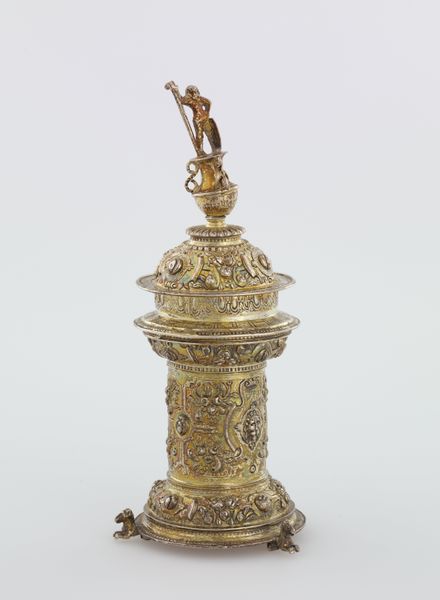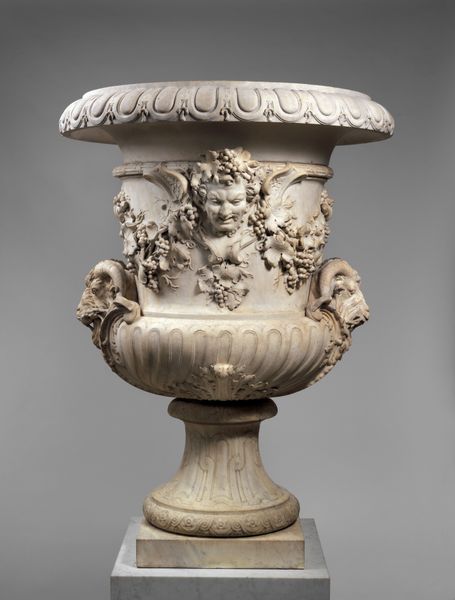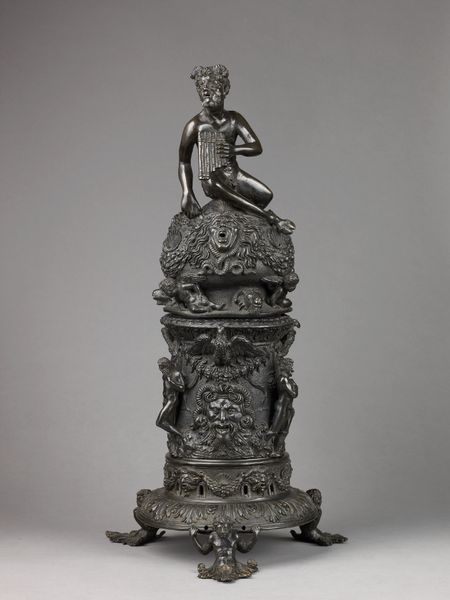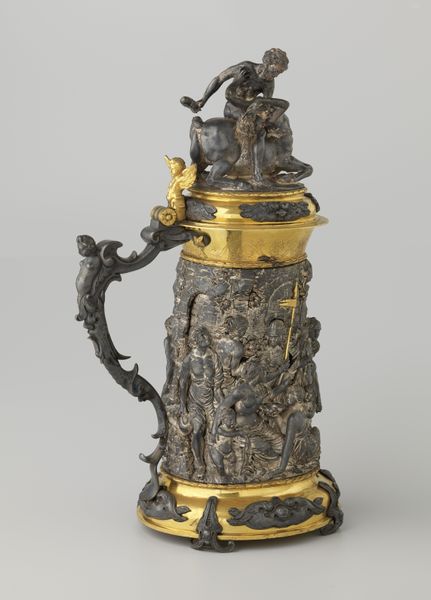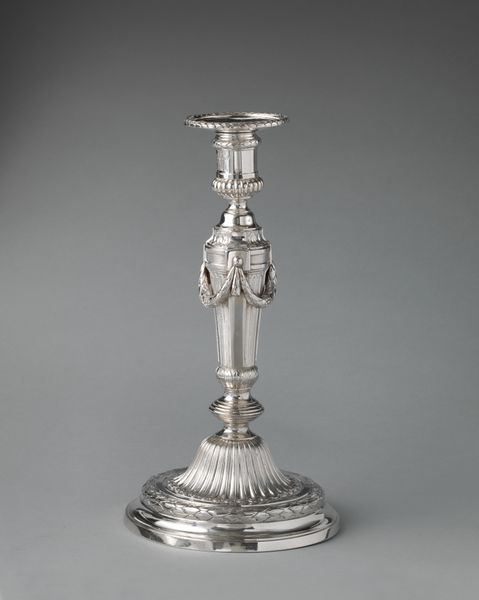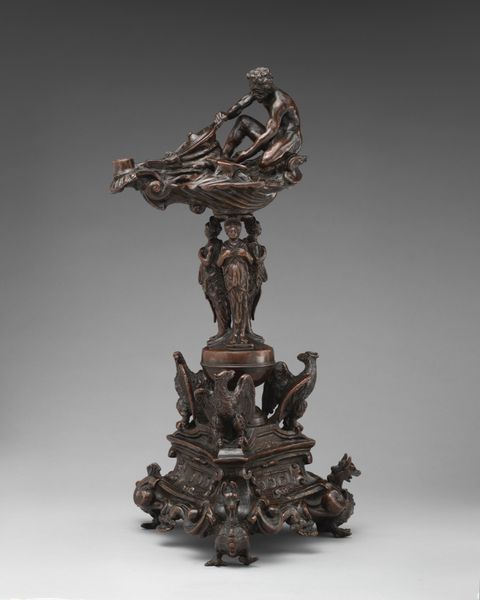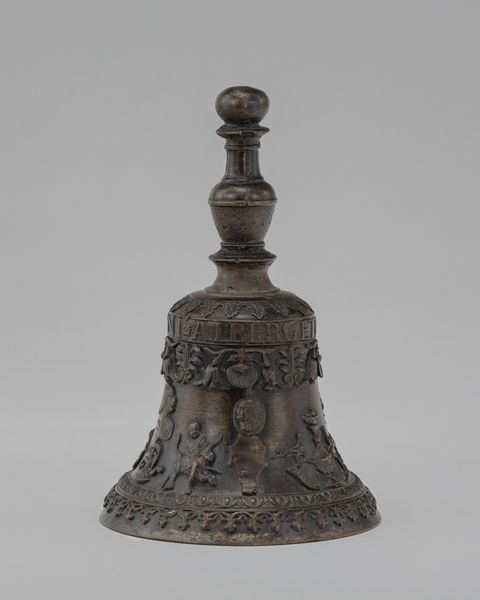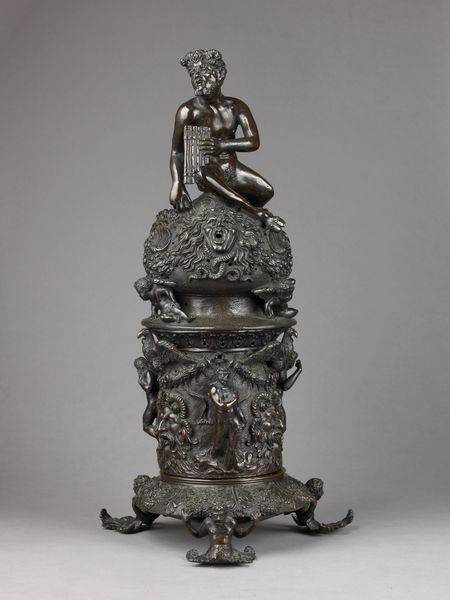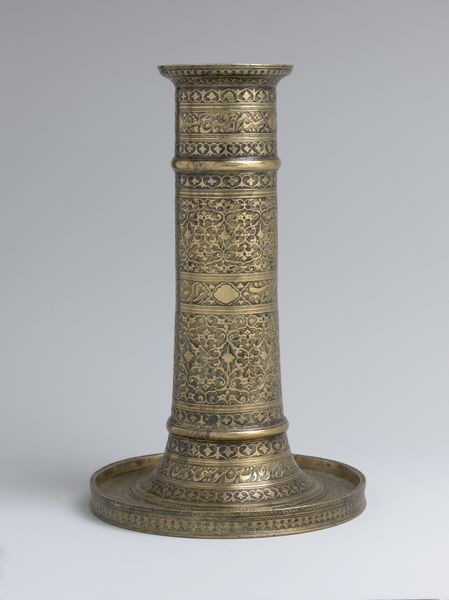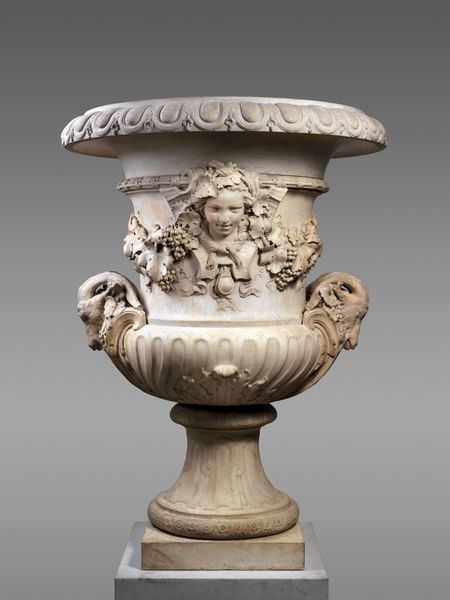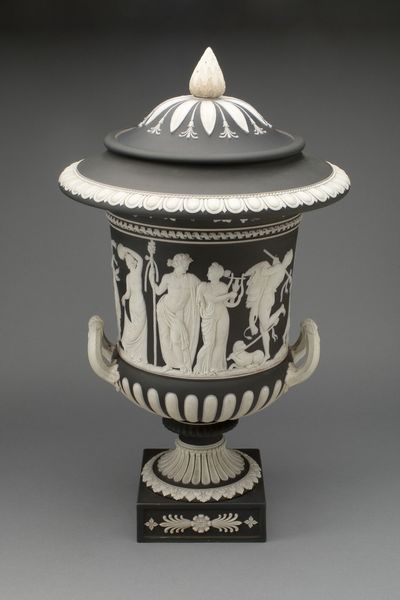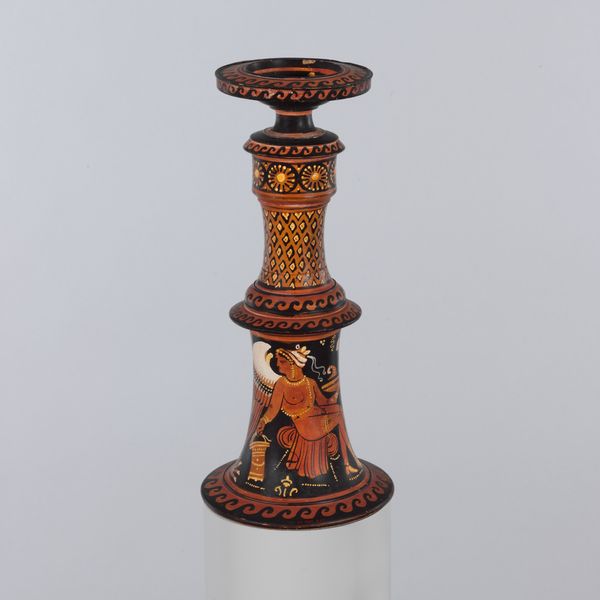
carving, ceramic, sculpture
#
carving
#
ceramic
#
mannerism
#
figuration
#
11_renaissance
#
stoneware
#
sculpture
#
ceramic
#
decorative-art
Dimensions: overall (height): 29.5 cm (11 5/8 in.) overall (diameter of base): 16.6 cm (6 9/16 in.) gross weight: 707.000 gr
Copyright: National Gallery of Art: CC0 1.0
Editor: So, this Candlestick, crafted circa 1547 to 1559, is an example of mannerism, featuring carving and ceramic. It feels so ornate and elaborate, a real show of wealth. What jumps out at you when you see it? Curator: I’m struck by the tension between its intended function, to hold light, and its extravagant form. Consider the socio-political context of Mannerism: it arose in the wake of the High Renaissance, a period of relative stability. Mannerism, however, reflects a growing anxiety, a sense of instability. Notice how the figures seem almost strained, their poses unnatural. Does this connect with societal pressure of that time? Editor: Definitely. The figures *do* seem a bit uncomfortable. It’s like they’re performing for an audience. Are the figures the most prominent feature, would you say? Curator: For me, it’s the deliberate artificiality, that sense of performance you mentioned. Court culture, for example, became incredibly formalized. Displays of wealth and power were paramount, and the Candlestick becomes a potent symbol. I wonder what it says about how gender and power might be interwoven, how this domestic object is an expression of it? How are wealth, power, gender, and domesticity intertwined in the form? Editor: That's a really interesting question. It makes me think about who would have owned something like this, and the statement they were trying to make. Curator: Exactly! And whose labor created it, and the absence of *their* voices and perspectives, right? So this object becomes less about simple aesthetics, and more about the narratives it carries within it. Editor: I hadn’t thought about it that way before. I was just looking at the pretty details! Now I see a whole history embedded in the craftsmanship. Curator: And seeing those details critically, allows us to consider and challenge dominant narratives that shape art history!
Comments
No comments
Be the first to comment and join the conversation on the ultimate creative platform.
